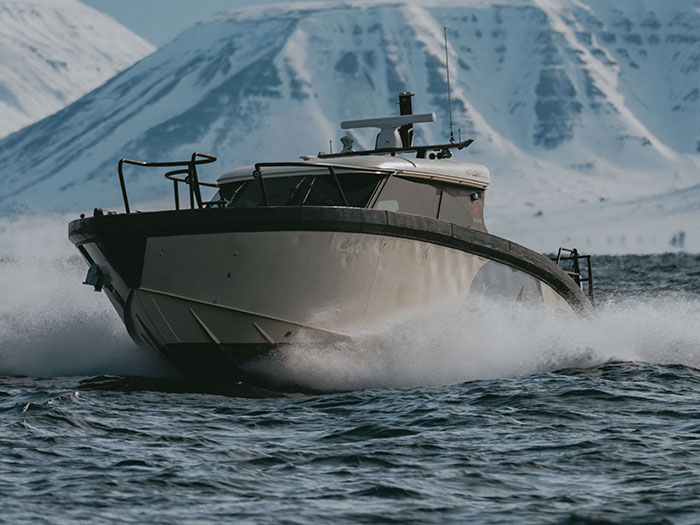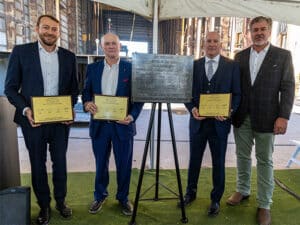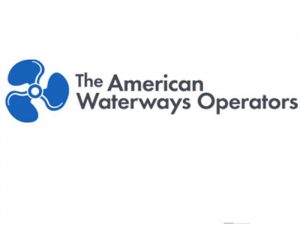
VIDEO: First of its kind hybrid-electric tour boat enters operations in the Arctic
Written by Marine Log Staff
Volvo-Penta powered Kvitbjørn is bringing hybrid-electric propulsion to the Arctic
A ground-breaking Volvo-Penta powered hybrid-electric vessel has just made its maiden commercial voyage from Longyearbyen, Svalbard – the world’s northernmost town, just 800 miles from the North Pole.
Designed for exploration in the heart of the Arctic, the Kvitbjørn (translation: Polar Bear) is powered by a complete helm-to-propeller Volvo Penta twin D4-320 DPI Aquamatic hybrid-electric solution.
The vessel is the product of a collaboration by partners Volvo Penta, Marell Boats, and Hurtigruten Svalbard. It is being used in a three-year pilot project to test new electromobility technology in one of the world’s most extreme maritime environments. With a top speed of 30 knots, a cruising speed of 24 knots, and a range of 500 nautical miles it’s an impressive vessel.
“We are so excited to see this vessel go into operation,” says Johan Inden, president of the Volvo Penta marine business unit. “We see electromobility as an enabler for many marine commercial operations – that have short, dedicated journeys – as our industry strives towards a zero CO2 emissions future. The Kvitbjørn operation fits our expected electromobility user case and we’re excited to learn how we can accelerate the journey toward sustainability, together.”
The tourists on board Kvitbjørn for its first voyage are among the first in the world to experience the Arctic with this level of quiet cruising under electric power.
“We have been eager to test drive Kvitbjørn since its arrival to Svalbard in April,” says Tore Hoem, Adventures Director at Hurtigruten Svalbard. “The difference from a traditional boat is the feeling of silence. In electric mode, you can hear the sound of the glacier ice in the water, the breath of walruses – it will allow us to offer a truly unique experience to our customers. Enabling the optimal mix of low-speed, silent cruising, and the ability to cover a lot of distance for the 3–4-hour duration of the tour. We look forward to the experience of driving it – and expect our guests will be just as excited by the silent experience on board.”
The state-of-the-art vessel, a Marell M15, is set to change how tourists experience the natural wonders of Svalbard.
Volvo Penta is known for its integrated systems approach from helm to propeller – the propulsion system, including engine and driveline, the electronic vessel control system (EVC), joystick control, dynamic positioning system, and the driver interface. This full systems approach is a key advantage in electromobility transformation – the benefits of which are evident in the Kvitbjørn..
The integrated system, with a uniquely developed human machine interface (HMI), allows the operator to seamlessly shift between driving modes enhancing efficiency and comfort on board. It also allows Volvo Penta the ability to offer ease of installation and one point of contact for aftermarket support, as well as enabling Volvo Penta experts to monitor and learn from vessels in real-time – which is the key to exploring new business models.
This will be Hurtigruten Svalbard’s first hybrid day tour vessel and the first of its kind in Svalbard – and in another first – the companies will be testing a ground-breaking new business model, based on a power-by-the-hour payment program.
Hurtigruten Svalbard will trial paying by the kilowatt-hour for the vessel’s operation. This pioneering e-mobility-as-a-service model, while still at a concept stage, could revolutionize how customers purchase and use marine e-mobility solutions, particularly as upfront costs can be higher. This is a way of risk-sharing between Volvo Penta and the end-user and could offer great benefits to early adopters.




